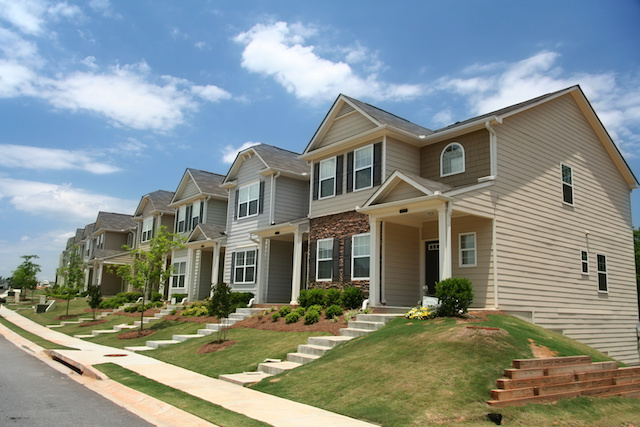How Condominium HOA Controls Shared Spaces and Enhances Neighborhood Harmony
The administration of common rooms within a condo organization plays a pivotal function in promoting community cohesion and preserving building values. Through the facility of thorough standards, the Condo HOA not just controls the usage of communal services yet likewise advertises a society of regard and liability amongst residents.
Role of the HOA
The homeowners association (HOA) acts as the regulating body for condo areas, playing a crucial duty in maintaining the property and advertising a natural living setting. It is accountable for passing and imposing community rules and policies, which are developed to protect the visual worth and functionality of the shared area. This administration guarantees that all locals comply with a standardized set of assumptions, promoting a feeling of unity amongst varied house owners.
In Addition, the HOA manages the financial elements of the community, including budgeting, gathering dues, and preserving typical areas. This economic oversight is essential in ensuring that essential upkeep and enhancements are performed without delay, enhancing residential property worths in time. The HOA likewise functions as an intermediary in between locals and outside entities, such as city government and provider, addressing common concerns properly.
In Addition, the HOA typically arranges neighborhood occasions and programs, encouraging neighborly interactions and building connections amongst locals. By promoting open interaction and addressing complaints, the HOA adds to an unified living environment. Hence, its diverse role is important in making sure the smooth procedure and overall contentment within condo communities.
Rules for Shared Spaces
Effective governance in condo neighborhoods demands clear regulations for common rooms, which are vital for maintaining order and advertising a feeling of area among residents. These regulations function as guidelines that ensure every person can delight in common locations, such as swimming pools, gardens, and leisure centers, without problem.

Furthermore, sanitation and maintenance criteria are essential, typically stating that locals must tidy up after themselves and report any kind of problems to the home owners' association. By plainly interacting these assumptions, the HOA can reduce misconceptions and encourage respect amongst citizens.
Inevitably, distinct rules for common areas contribute to the general top quality of life in a condominium community, enabling citizens to exist side-by-side peacefully while delighting in the services that boost their living experience. condo hoa.
Importance of Community Guidelines

Neighborhood standards play a significant duty in promoting a cohesive and respectful setting within condo associations. These standards establish clear expectations for citizens, advertising a sense of liability and shared duty. By defining acceptable habits and methods, neighborhood guidelines help protect against misunderstandings and problems among residents.
Moreover, these standards act as a framework for keeping the practical and aesthetic integrity of common areas. They ensure that all residents abide by requirements concerning property maintenance, sound levels, and usage of common centers. This uniformity not only Check This Out improves the visual appeal of the neighborhood yet additionally contributes to overall residential or commercial property values, benefiting all home owners.
Dispute Resolution Approaches
Browsing conflicts within a condo organization needs a structured approach to make sure reasonable and efficient resolution. Efficient conflict resolution techniques usually begin with open interaction, motivating locals to voice issues in a respectful manner. Developing a marked network for complaints, such as a more tips here pointer box or an on-line discussion forum, can promote this process.
Mediation is an additional critical method, wherein a neutral 3rd party assists disputing locals get to an equally reasonable service. This approach promotes cooperation and understanding, reducing hostility - condo hoa. The HOA board ought to additionally establish clear procedures for attending to grievances, guaranteeing all celebrations understand the actions involved
Routine problem resolution training for board members can enhance their ability to take care of disagreements efficiently. Utilizing a distinct structure, such as the "Interest-Based Relational Strategy," helps concentrate conversations on interests review rather than positions, advertising a solutions-oriented mindset.
Advantages of Community Harmony
Promoting area consistency within a condo organization brings countless advantages that boost the total living experience for citizens. An unified community encourages cooperation and participation amongst neighbors, causing an extra gracious environment. When homeowners feel connected and reputable, they are most likely to involve in communal activities and get involved in decision-making procedures, leading to a more powerful sense of belonging.
Additionally, area harmony considerably lowers disputes and misconceptions, which can otherwise disrupt day-to-day live. A peaceful atmosphere decreases stress and anxiety and promotes psychological wellness, enabling citizens to enjoy their homes fully. Additionally, harmonious connections commonly convert right into increased residential or commercial property worths, as prospective buyers are attracted to communities characterized by security and collaboration.

Conclusion
Through the establishment of clear guidelines and community guidelines, locals are encouraged to preserve a responsible and considerate environment. Ultimately, the efforts of the HOA contribute to a natural neighborhood, advertising both property worths and general resident contentment.
Furthermore, the HOA commonly organizes neighborhood occasions and programs, motivating neighborly communications and building partnerships amongst citizens. By marking acceptable behaviors and methods, area standards assist stop misconceptions and problems among homeowners.
Additionally, area standards help with effective interaction amongst citizens and the Homeowners Organization (HOA) Through the establishment of clear rules and area standards, locals are encouraged to preserve a responsible and considerate atmosphere. Eventually, the initiatives of the HOA contribute to a natural neighborhood, advertising both building worths and total resident complete satisfaction.